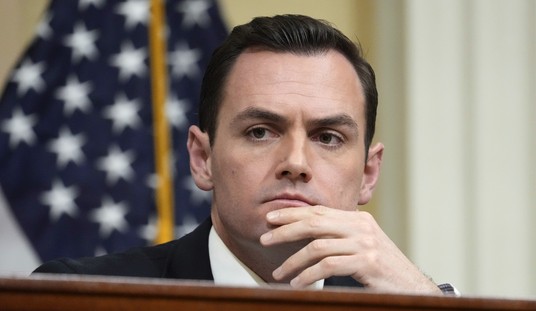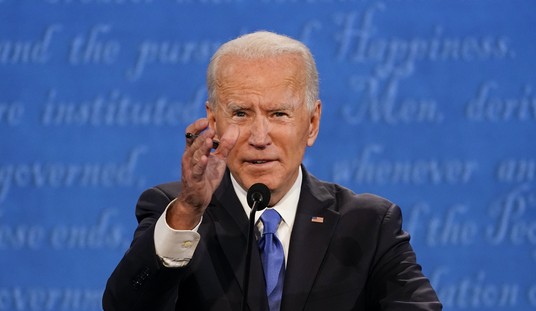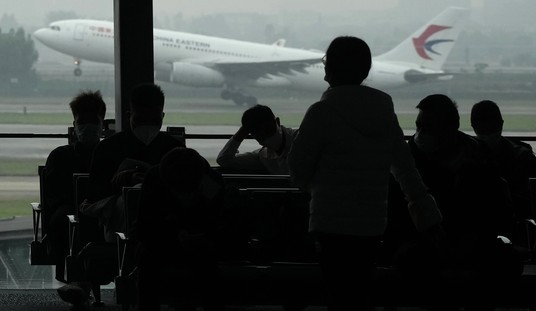What happens when artificial labor cost increases meet a massive, decade-long monetary expansion? Oh, nothing except what any economist could predict in moments of honesty. The inflationary wave touched off by Joe Biden’s March stimulus spending bill and a supply-chain crisis has wiped out all of the wage gains picked up by Democrats’ manipulation of labor costs in the COVID relief bills. And then some, a surprised Washington Post reported this weekend:
“That raise meant nothing,” said Stehlik, 23, whose roommate works at the same hotel. “I’ve got student loans. My roommate’s got medical debt. Most of my co-workers work two or three jobs, and they’re still having difficulty making ends meet.”
After years of barely budging, wage growth is finally at its highest level in decades. A global pandemic, combined with swift government stimulus and unexpected labor shortages, have put workers in the driver’s seat, giving them the kind of negotiating power they had never imagined.
But in an unexpected twist, the same strong economic recovery that is emboldening workers is also driving up inflation, leaving most Americans with less spending power than they had a year ago.
Although average hourly wages rose 4.7 percent last year, overall wages fell 2.4 percent on average for all workers, when adjusted for inflation, according to the Labor Department.
An “unexpected twist”? Come on, man. In the first place, when wages get forced up artificially due to outside interventions, it necessarily increases the prices of goods and services. Labor costs are built into those prices, after all, so when labor costs rise, how can anyone expect their prices to remain constant? Price increases get expressed as inflation even in normal economic times. It’s one reason why increases to the minimum wage are all but futile; they only increase buying power for a short period, after which price increases eventually force the system back to the status quo ante. (If minimum-wage increases solved buying-power problems, we wouldn’t have had to keep passing them for the last 50 years.)
In this case, though, there are other forces magnifying this effect. The relief bills set up incentives for people to stay out of work, forcing labor costs to rise much more rapidly — a social-engineering outcome explicitly demanded by Democrats in the CARES Act. The massive monetary expansions forced by Congress for the relief spending came on top of a decade of monetary expansions at the Federal Reserve, a goosing of economic output that left the global economy at risk for structural inflation that even the Fed will find hard to fight now. Those policies go back to the Fed’s response to the Great Recession and the Obama-Biden administration’s decisions to respond with low-growth tax and regulatory policies in its aftermath.
And indeed, we now have global inflation taking off, albeit at a slightly lower pace than in the US:
It probably isn’t much consolation for Americans struggling with the highest inflation in 40 years, but they are not alone.
In the European Union, prices are rising faster than at any time since the euro currency was introduced. The annual inflation rate in the United Kingdom hit 5.4 percent in December, the highest figure there in nearly 30 years. Canada’s consumer prices are rising twice as fast as before the pandemic.
Even in Japan, where prices have been depressed almost continuously since the collapse of the late 1980s real estate bubble, the central bank in recent days revised upward its assessment of inflation risks for the first time in eight years. Among major economies, only China has a lower inflation rate today than in early 2020.
Around the world, soaring prices are emerging as a feature of the pandemic-era recovery, prompting some central banks to pivot to inflation fighting.
The inflationary risks of the CARES Act were obvious enough at the time that several Senate Republicans initially balked at its structure. A number of economists warned against the dumping of new cash into the economy via the second and third major relief packages, especially the third. Larry Summers, not exactly an economic conservative, explicitly warned that the scope of the relief package would overheat the economy and trigger an inflationary wave. How the predicted outcome of all these policy decisions can possibly be called an “unexpected twist” is beyond explanation, except as willful ignorance of monetary policy and manipulation.
In the end, inflation sticks it to the working classes. This is exactly what’s happening, thanks to decisions made by progressives over the last two years as well as over a decade ago when they didn’t let the previous crisis go to waste either.







Join the conversation as a VIP Member